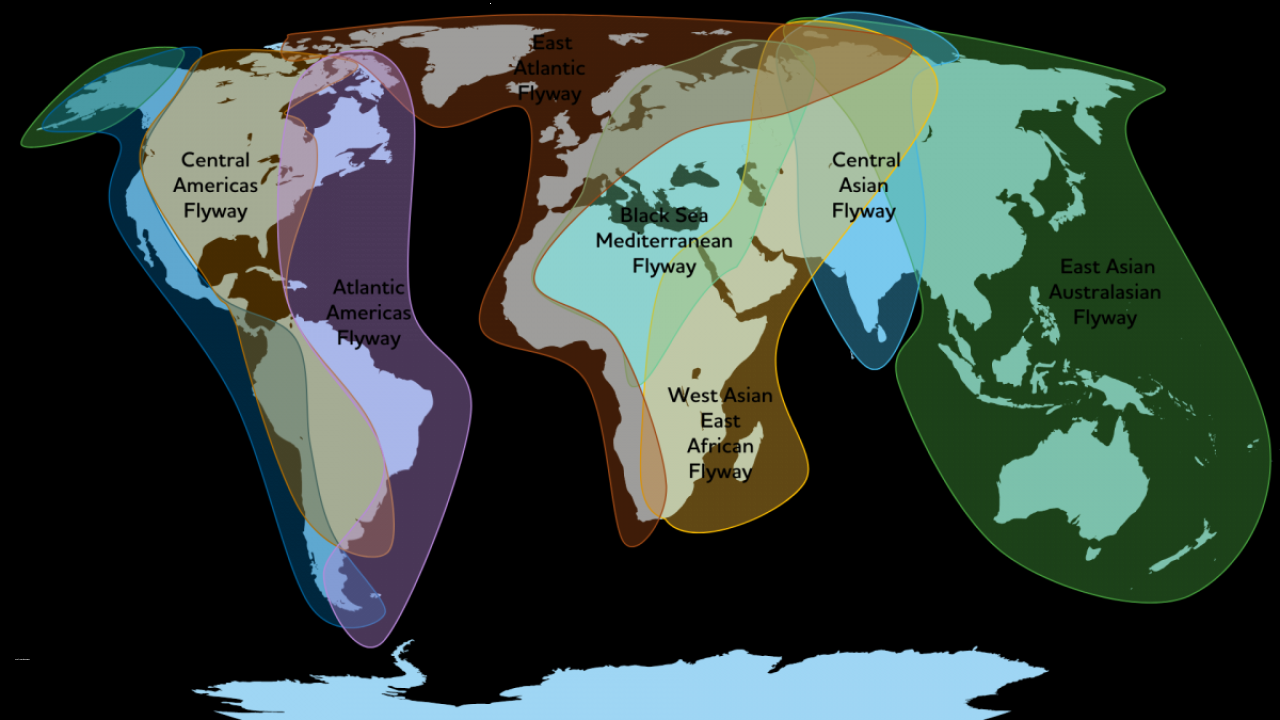Central Asian Flyway
The Central Asian Flyway (CAF) is a significant migration route that covers a vast continental area of Eurasia, including 30 countries of North, Central, and South Asia and Trans-Caucasus. The Flyway consists of numerous crucial migration paths of waterbirds, with the majority of them stretching from the breeding grounds in the Russian Federation’s northernmost regions to the non-breeding or wintering grounds in West and South Asia, the Maldives, and the British Indian Ocean Territory located at the southernmost end.
CAF Migration Routes
The CAF migration routes include the steppes and cold deserts of Central Eurasia and much of the Himalayan chain, where unique, high-altitude migrations, such as those of the Bar-headed Goose, take place. The Flyway includes a minimum of 279 populations of 182 migratory waterbird species, among which 29 species are globally threatened or close to being threatened. Many waterbird populations are declining rapidly, and the habitats they depend on are under threat due to uncontrolled hunting, habitat degradation, unsustainable water management, and lack of law enforcement and conservation capacity.
CAF and AEWA Agreement Area
There is a correlation between the CAF and the Agreement on the Conservation of African-Eurasian Migratory Waterbirds (AEWA), which was signed in 1995 in The Hague, the Netherlands. Sixteen of the thirty countries included in the CAF fall within the AEWA Agreement Area, accounting for over half of the migratory waterbird species’ populations.
Initiatives for Conservation
In May 2023, the Ministry of Environment, Forest and Climate Change collaborated with the United Nations Environment Programme/Convention on Migratory Species (UNEP/CMS) to hold a meeting of Range Countries in New Delhi. The main objective of the meeting was to enhance conservation efforts for migratory birds and their habitats in the Central Asian Flyway. The meeting was attended by delegates from eleven CAF countries, representatives of Chief Wildlife Wardens of States, scientific institutions in India, international and national non-governmental organizations, and subject experts.
Institutional Framework Mechanism
The delegates agreed on an institutional framework mechanism to develop a coordinated approach to the conservation of migratory birds and their habitats. During the meeting, the participants talked about important areas for implementation and reached an agreement on a preliminary plan for revising the CMS CAF Action Plan. The conference provided a crucial opportunity for the CAF Range States to work together and exchange thoughts and best practices for preserving the migratory birds and their habitats sustainably.
Month: Current Affairs - May, 2023
Category: International / World Current Affairs


